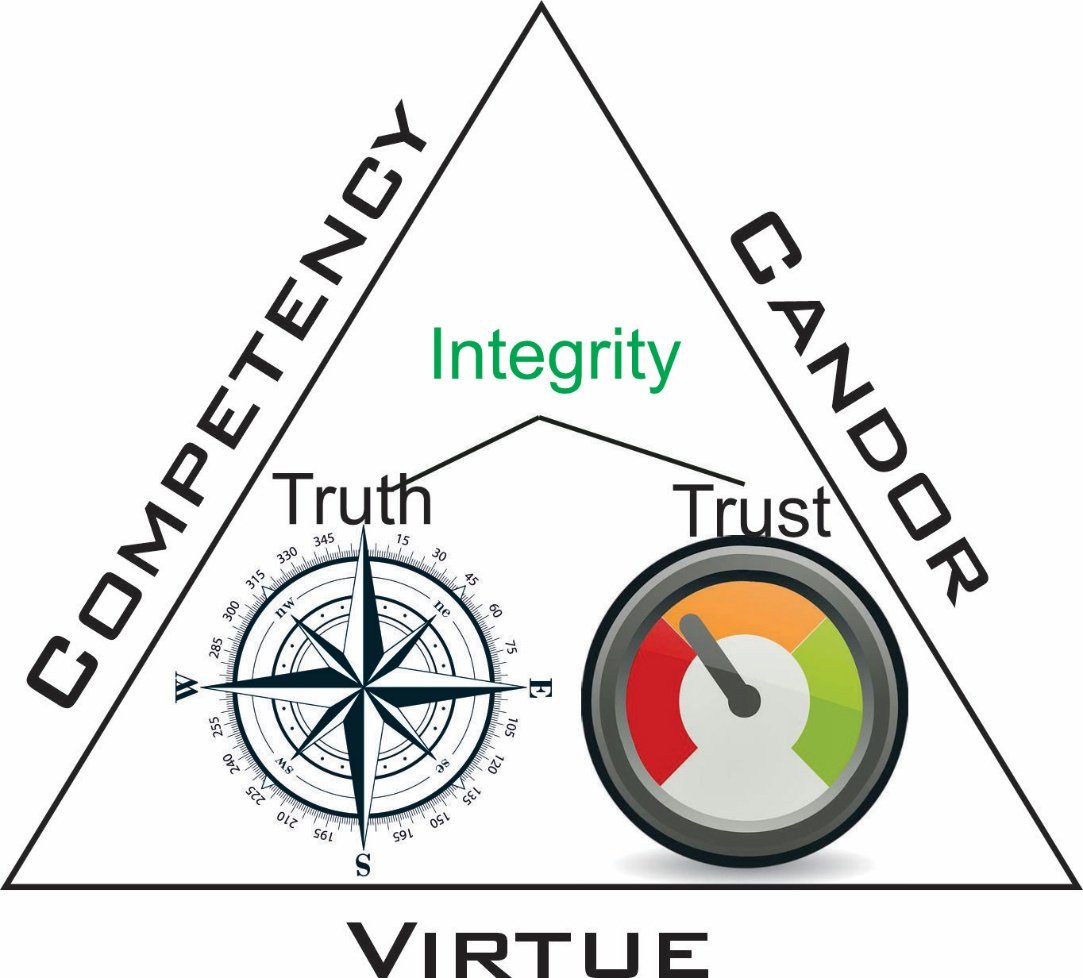
Virtue-based Leadership, Part 5: Competency, Candor, and Virtue
Abstract: Is leadership a process? Processes have inputs and actions/activities that produce outputs. In virtue-based leadership, the inputs are Virtue, Competency, and Candor. The outputs are Integrity, Truth, and Trust. Table 1 in the body below provides key aspects of the activity/actions that generate the outputs. These outputs are values and the DNA of successful organizations. This model is based on the overall framework in Part 1 and the virtue-based critical thinking concept in Virtue and Courtesy to build a virtue-based leadership process. That seems to contradict and long history of leadership as an art. Browse Amazon and you will find lots of books on leadership as an art, which seems to fly in the face of a process. But does an artist have a process to create a masterpiece? I suspect the artist does. The art is in the artist’s innate skills and his/her mastery of the medium and knowledge of how to select the right inputs at the right time. The leader is an artist that understands the inputs and medium of leadership, the organization, and the mission and pull them all together.
The core of the virtue-based leadership model introduced in Part 1 is Integrity, Truth, and Trust. These are organizational core values that every successful organization, from a four-man infantry fire team in combat to a huge multinational corporation, must manifest and sustain. Now there are multinational organizations that appear to be successful but may have negotiable integrity and a convenient relationship with the truth. These organizations only generate trust through false narrative, and money. This does not engender loyalty and potentially long-term success. However, in huge organizations, loyalty and trust can get diffused and truth becomes ambiguous, and integrity and accountability are lost.
Virtue, Competency, and Candor manifest these core values and build effective leadership. Without these core attributes and traits, the leader will struggle to lead an effective organization. The key is the leader transmits and nurtures these traits in everyone in the organization, so they essentially become part of the organization’s DNA along with mission critical requirements.
Integrity has two dimensions. First, the leader must act in accordance with organizational norms, legal, and societal norms. Second, the leader must ensure that the organization remains intact and sound—structural integrity.
The leader must embrace the truth and ensure organization members do as well, even at personal cost. He or she must also embrace the truth, even when it costs the organization. A good example is Johnson and Johnson during the Tylenol crisis back in the 1980s. J&J emerged from the crisis intact, with a higher level of public trust. Contrast this with E. F. Hutton and other defunct financial companies during the financial crises of the 1990s an and 2000s.
Trust is the lubricant that makes an organization operate effectively. Without trust, people question decisions and often hesitate to act in uncertain and stressful conditions. FranklinCovey has an interesting approach in their Speed of Trust.
To do this, the leader must both communicate these values and live them. When leaders fail to embody virtue, competency, and candor, their influence fades unless another leader revitalizes them. So, what are virtue, candor, and competency and how do leaders manifest them to develop integrity, truth, and trust as integral parts of organizational DNA? Virtue is the basis and governs candor to ensure it is true, honorable, and compassionate. Compassion can take many forms, from caring leadership to sharing hard truths while there is still time capability to rectify a situation. Competency means having subject matter expertise in the core leader tasks and the mission essential tasks. It also facilitates candor. The more competent we are, the more confident we are and the more willing we are to share.
The table below summarizes this process.
| Table The Virtue Leadership Process | ||
| Trait | Leader Actions | DNA Manifestation |
| Virtue |
|
|
| Candor |
|
|
| Competency |
|
|
Can we reduce leadership to a process? That seems to contradict and long history of leadership as an art. Browse Amazon and you will find lots of books on leadership as an art, which seems to fly in the face of a process. But does an artist have a process to create a masterpiece? I suspect the artist does. The art is in the artist’s innate skills and his/her mastery of the medium and knowledge of how to select the right inputs at the right time. The leader is an artist that understands the inputs and medium of leadership, the organization, and the mission and pull them all together.






One Comment
Pingback: